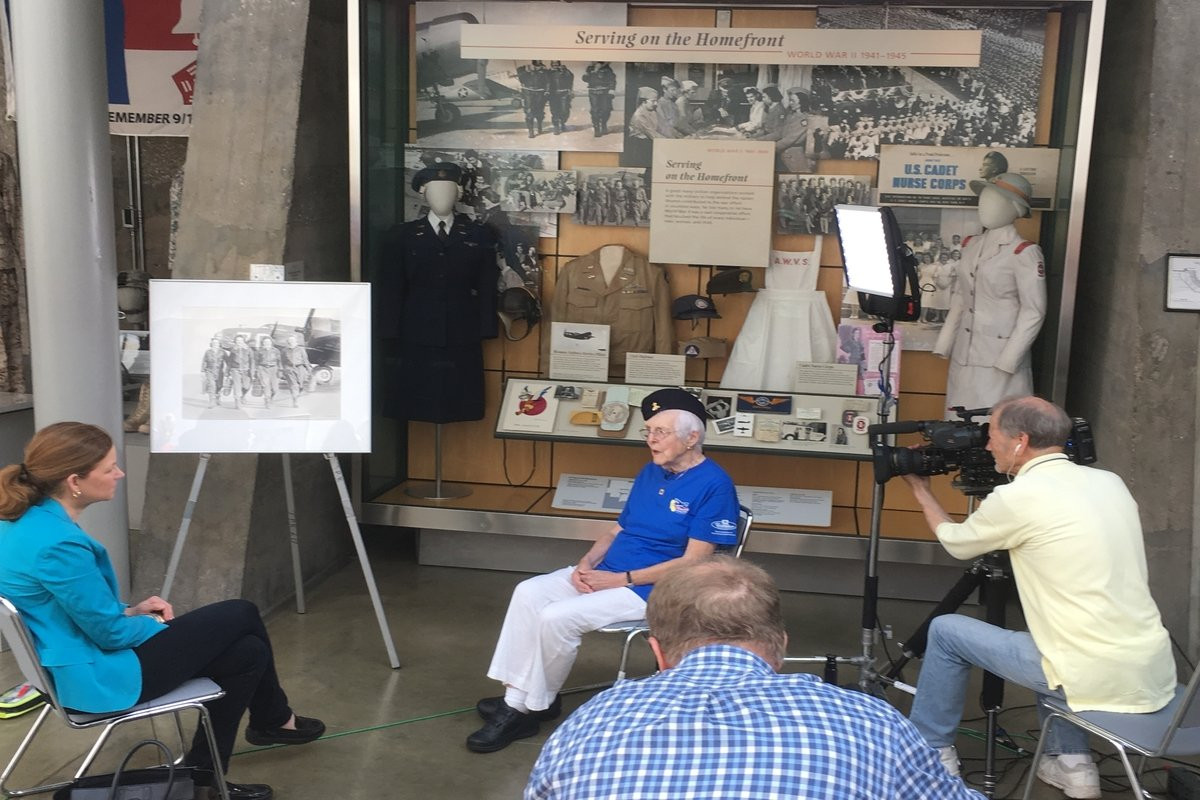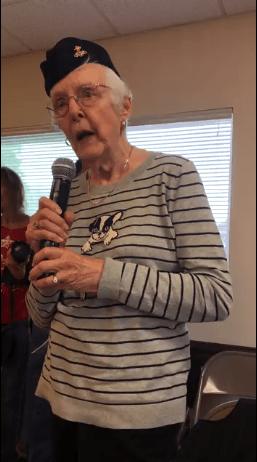A Memorial for America’s Servicewomen

Just before Memorial Day, I met a spunky, sharp, 90-year-old World War II veteran named Kiki Shappell.
Kiki has always been a trailblazer. During World War II, she dropped out of high school to help support her family by working in a factory doing “Rosie the Riveter work.” At just 16 years old, she joined the US Naval Reserve (Women's Reserve)—better known as the WAVES—and became an airplane repair technician. Kiki told me that she had lied about her age to get into the Navy with the help of a fake birth certificate because she loved the work she was doing. Contributing to the war effort made her feel important. She also knew that serving in the military could open doors for her.
Kiki was in Washington, DC, with an Honor Flight tour for veterans from California. The group came to visit memorials honoring their service and that of their fallen comrades. Their trip included a stop at one memorial that many have no idea exists: the Women In Military Service For America Memorial.
 Kiki Shappell
Kiki Shappell
Located at the gateway to Arlington National Cemetery, the Women’s Memorial is the only memorial dedicated to honoring the estimated three million women who serve or have served in the US Armed Forces since the American Revolution.
While at the Memorial, Kiki talked with CBS News about how she could not have predicted the impact joining the Navy would actually have on the rest of her life. "The Navy gave me a marvelous opportunity to do things I would have never been able to do. The foundation was from my Navy service. It was the smartest decision I ever made."
Kiki went on to earn a master's degree in engineering and thermodynamics through the GI bill, which eventually led to building airplanes at Lockheed Martin—something virtually unheard of for a woman at the time.
Kiki said that her trip brought long overdue recognition of her service. “I never had that acceptance earlier,” she said. “So it was quite pleasant to have people come up and shake my hand and say, ‘Thank you for your service.’”
Kiki isn’t alone. For the most part, military memorials tell the stories of service members who were men. A recent Washington Post story highlighted the struggle that so many servicewomen experience—feeling that their service goes unrecognized.
The Women’s Memorial is dedicated not only to honor the contributions of women but also to gather their stories in a registry—each and every one.
The Memorial also serves an important role for recognizing current women servicemembers and providing education and inspiration for the next generation, Army Sergeant Major Christal Rheams told the PBS NewsHour. “The stories send a signal,” she said. “You know, it would be interesting for my daughter, for example, to be able to look up and say, you know, that’s my mom or my granddaughter or my great-granddaughter. It’s important for those stories to be told and to be held somewhere.”
 Kiki Shappell
Kiki Shappell
Thanks to the efforts of a dedicated team at the Women’s Memorial, the stories of women like Kiki and Sergeant Major Rheams are being preserved—and told. We look forward to working with the Women’s Memorial to continue to share and honor the stories of these incredible women.